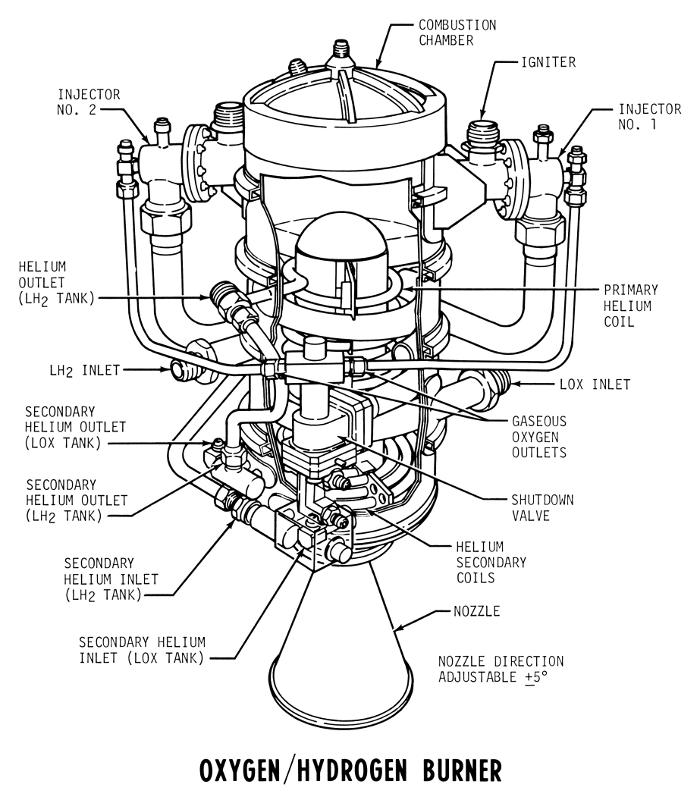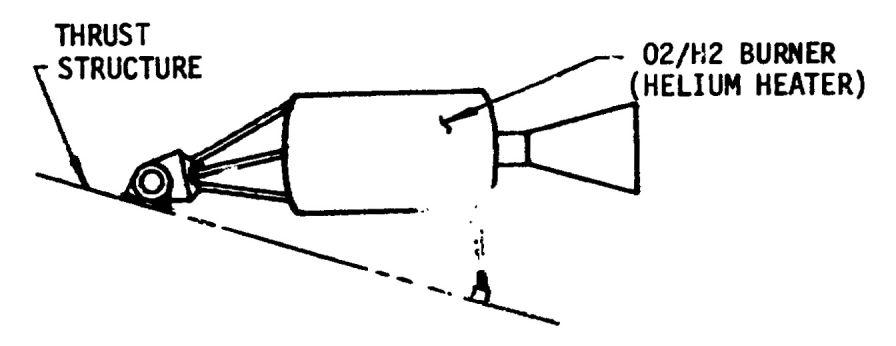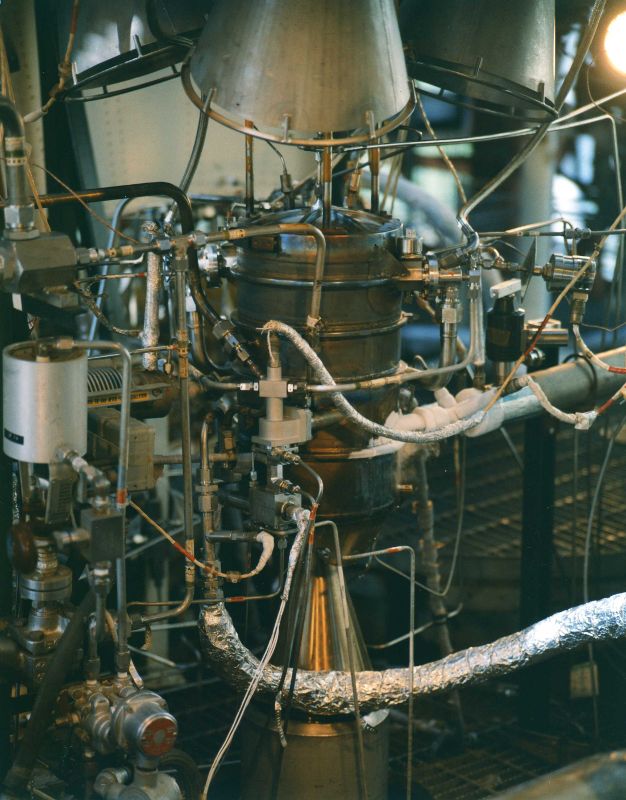O2/H2 Burner (aka Helium Heater)
On the Saturn V, the S-IVB (third) stage burned for a few minutes to place the Apollo spacecraft in Earth orbit. A little over two hours later, the S-IVB's J-2 engine would reignite to perform its trans-lunar injection (TLI) burn, sending the Apollo spacecraft to the moon.
During its parking orbit, the fuel and oxidizer tanks were allowed to vent. Prior to J-2 re-ignition, it was is necessary to re-pressurize the tanks.
As described in the Saturn V Launch Vehicle Flight Evaluation Report AS-503, Apollo 8 Mission:
The O2/H2 burner system was implemented on AS-503 and subsequent stages to provide a new means of repressurizing the oxidizer and fuel tanks for orbital restart. The ambient helium repressurization system was retained as a redundant system. The O2/H2 burner is mounted on the aft thrust structure where it heats cold helium that is used to repressurize the propellant tanks. Onboard propellants, LOX and LH2, are fed to the burner through vacuum jacketed, low pressure ducts at existing tank pressures and then through regenerative coils where they are heated before being injected through two injectors into the combustion chamber of the burner. The propellants are ignited and the resulting combustion products pass over four sets of helium coils, heating the cold helium, and then are exhausted through a nozzle. Three of these helium coils are connected in parallel to pressurize the fuel tank; the fourth coil is utilized to pressurize the oxidizer tank.
Click image for a 3693x4222 pixel
version of this image in a new window.
Adapted from p. 6-12 of the Saturn V Flight Manual SA-503, located
in the Saturn V collection at the Dept. of Archives/Special
Collections, M. Louis Salmon Library, University of Alabama in
Huntsville (also available from the NASA Technical Reports
Server; p. 127 in the PDF).
Scan, clean-up, and adaptation by heroicrelics.org.
Here's a diagram showing how the O2/H2 burner is mounted to the S-IVB's aft skirt; compare with a picture of the top of the helium heater:
Click image for a 1344x519 pixel
version of this image in a new window.
Figure adapted from p. 24-13 (p. 705 in the PDF) of the Saturn S-IVB-504N
Stage Flight Evaluation Report
Extraction, clean-up, and adaptation by heroicrelics.org.
The S-IVB stage on Johnson Space Center's Saturn V has an O2H2 burner installed; the S-IVB stage on Kennedy Space Center's Saturn V also has an O2H2 burner installed.
The USSRC's S-IVB stage, however, lacks an O2H2 burner as it was not a flight stage, but rather the dynamic test article (S-IVB-D), being used in both the Saturn IB and the Saturn V dynamic test programs. As such, the stage is not quite configured like an S-IVB as would be flown on a Saturn IB or like an S-IVB as would be flown on a Saturn V.
Since its S-IVB is not of a vintage to possess one the USSRC exhibits an O2H2 burner separately, near the S-IVB stage. Additionally, part of the casing of the combustion chamber has been cut away, allowing the visitor to inspect its interior.
The former cloudster.com's "Saturn Booster Third Stage" page had a number of S-IVB assembly photos. The last two pictures on that page show technicians installing the O2H2 burner.
Finally, Alan Lawrie sent me this photo he obtained through the National Archives. Dated April, 1968, it shows an O2H2 burner being test-fired in the Douglas Sacramento Test Operations (SACTO) Alpha 2B test stand's altitude chamber:
Click image for a 2202x2814
pixel version of this image in a new window.
Photo credit: NARA via Alan Lawrie



